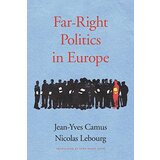
Prilagodi prikaz proizvoda za upoređivanje
Opis i karakteristike
In Europe today, staunchly nationalist parties such as France s National Front and the Austrian Freedom Party are identified as farright movements, though supporters seldom embrace that label. More often, far right is pejorative, used by liberals to tar these groups with the taint of fascism, Nazism, and other discredited ideologies. JeanYves Camus and Nicolas Lebourg s critical look at the far right throughout Europe from the United Kingdom to France, Germany, Poland, Italy, and elsewhere reveals a prehistory and politics more complex than the stereotypes suggest and warns of the challenges these movements pose to the EU s liberaldemocratic order.
The European far right represents a confluence of many ideologies: nationalism, socialism, antiSemitism, authoritarianism. In the first half of the twentieth century, the radical far right achieved its apotheosis in the regimes of fascist Italy and Nazi Germany. But farright movements have evolved significantly since 1945, as FarRight Politics in Europe makes clear. The 1980s marked a turning point in political fortunes, as nationalpopulist parties began winning seats in European parliaments. Since the terrorist attacks of 9/11, a new wave has unfurled, one that is explicitly antiimmigrant and Islamophobic in outlook.
Though Europe s farright parties differ in important respects, they are motivated by a common sense of mission: to save their homelands from the corrosive effects of multiculturalism and globalization by creating a closedoff, ethnically homogeneous society. Members of these movements are increasingly determined to gain power through legitimate electoral means. In democracies across Europe, they are succeeding.
Slični proizvodi - Politika
Promena cene
Trenutno najbolja ponuda:
3.599,00 din u Delfi
Recenzije korisnika
Popularni proizvodi - Politika
Najnoviji proizvodi